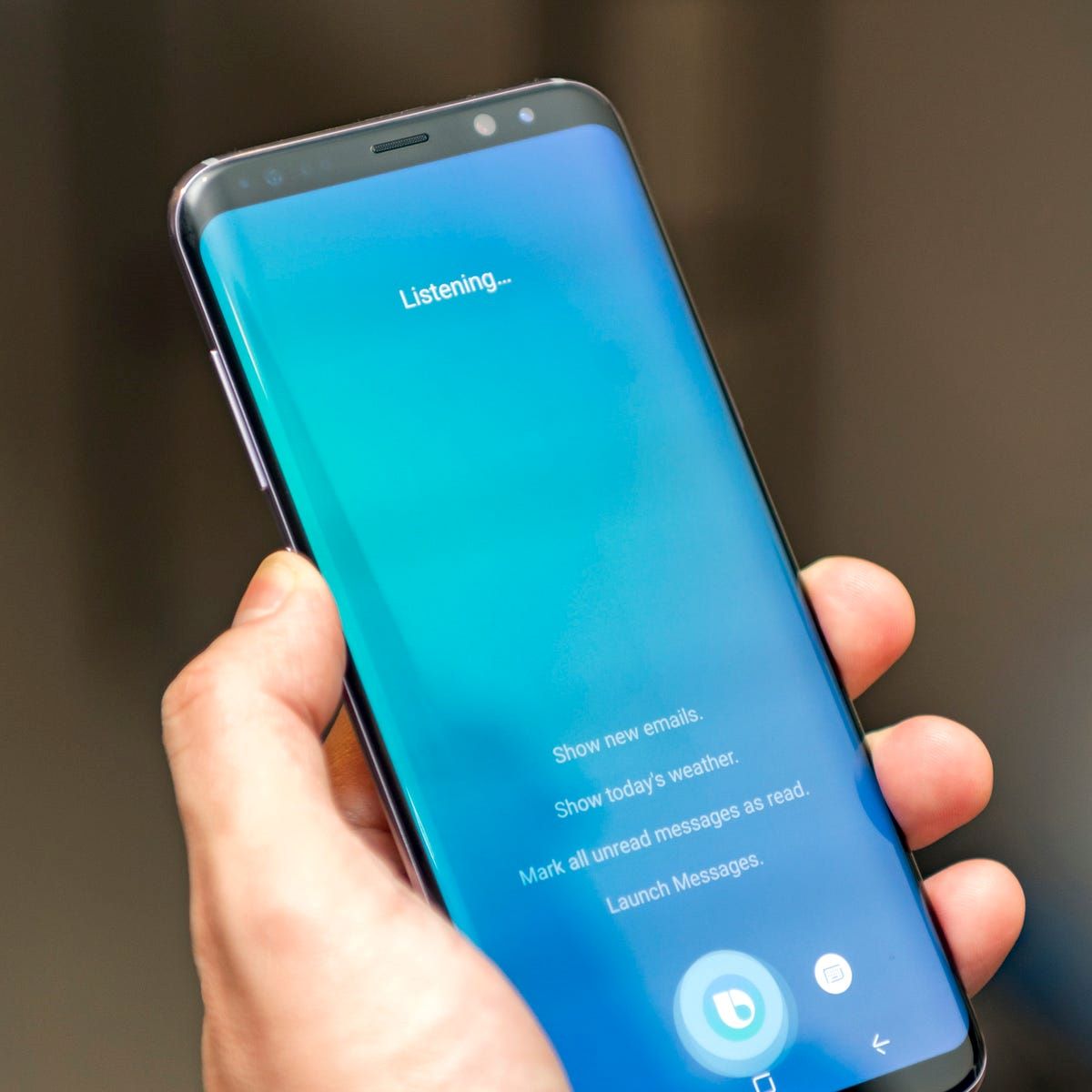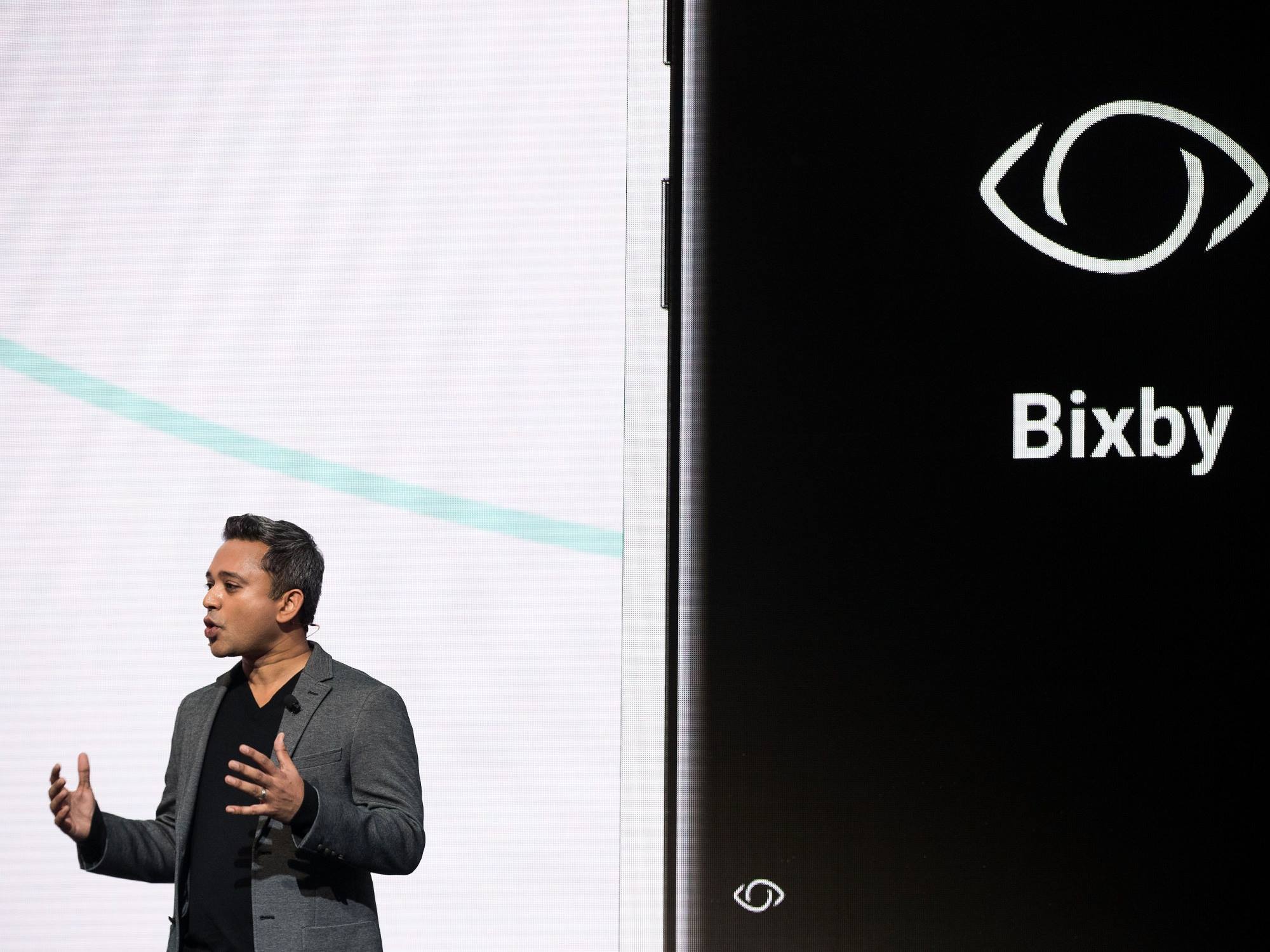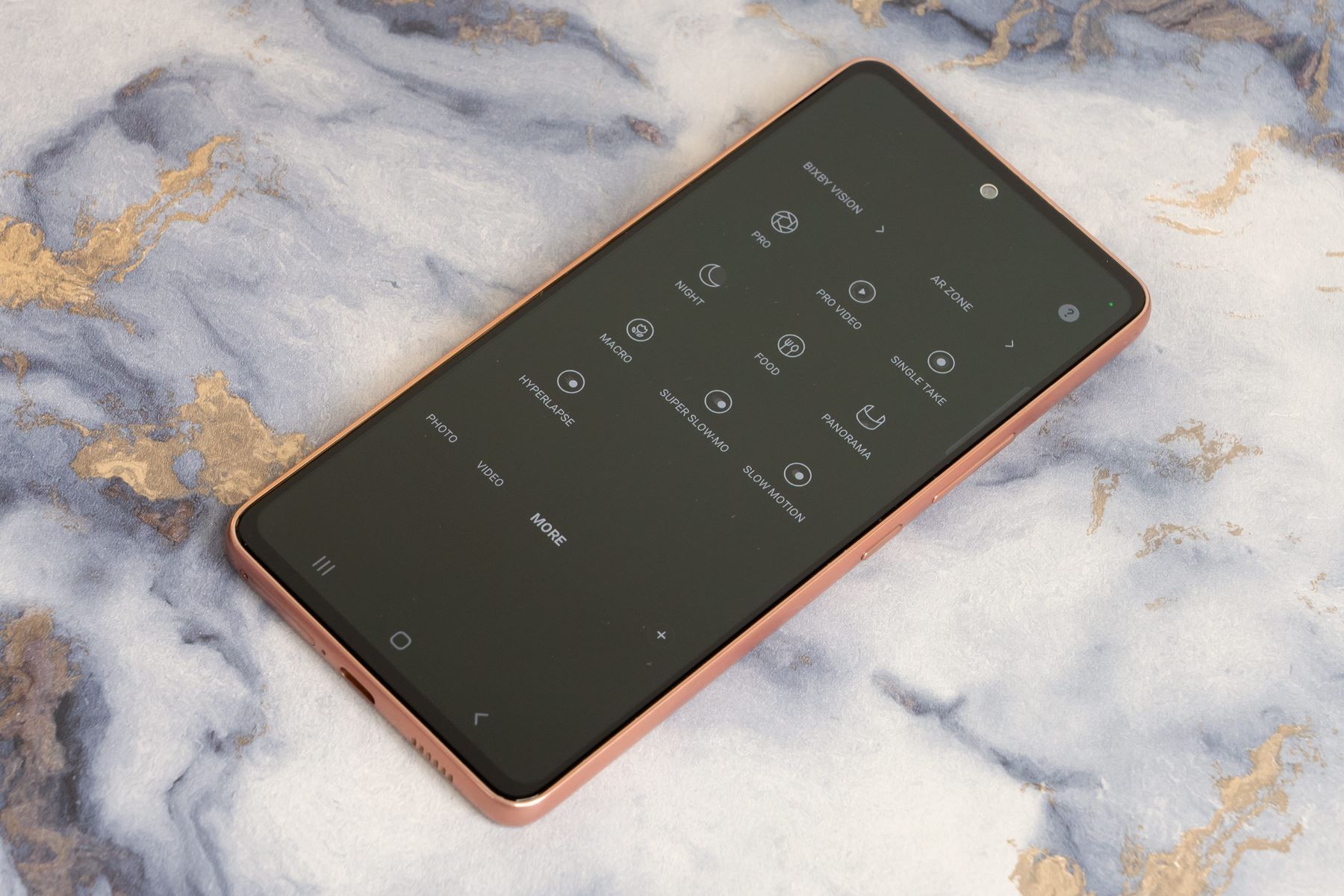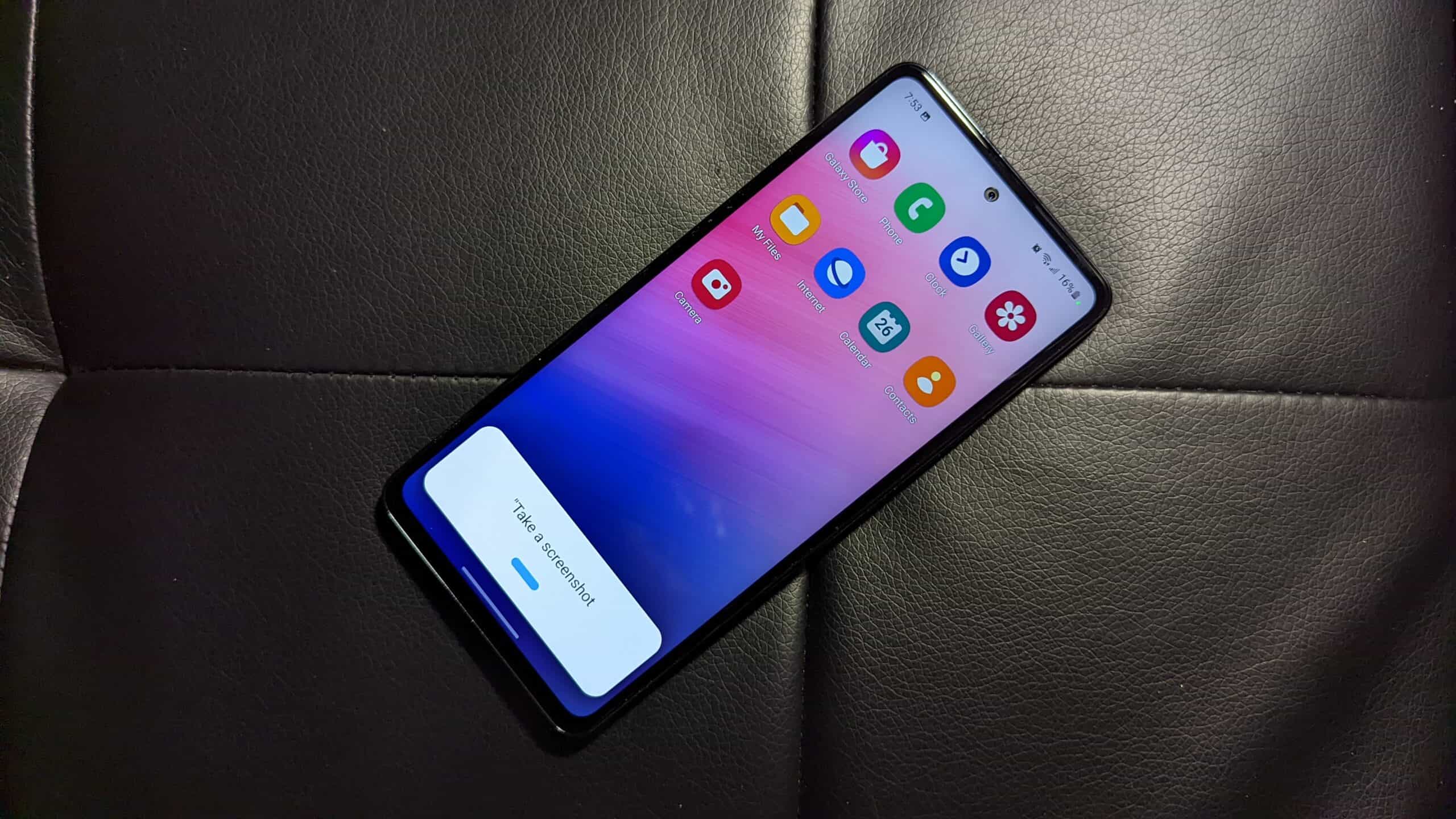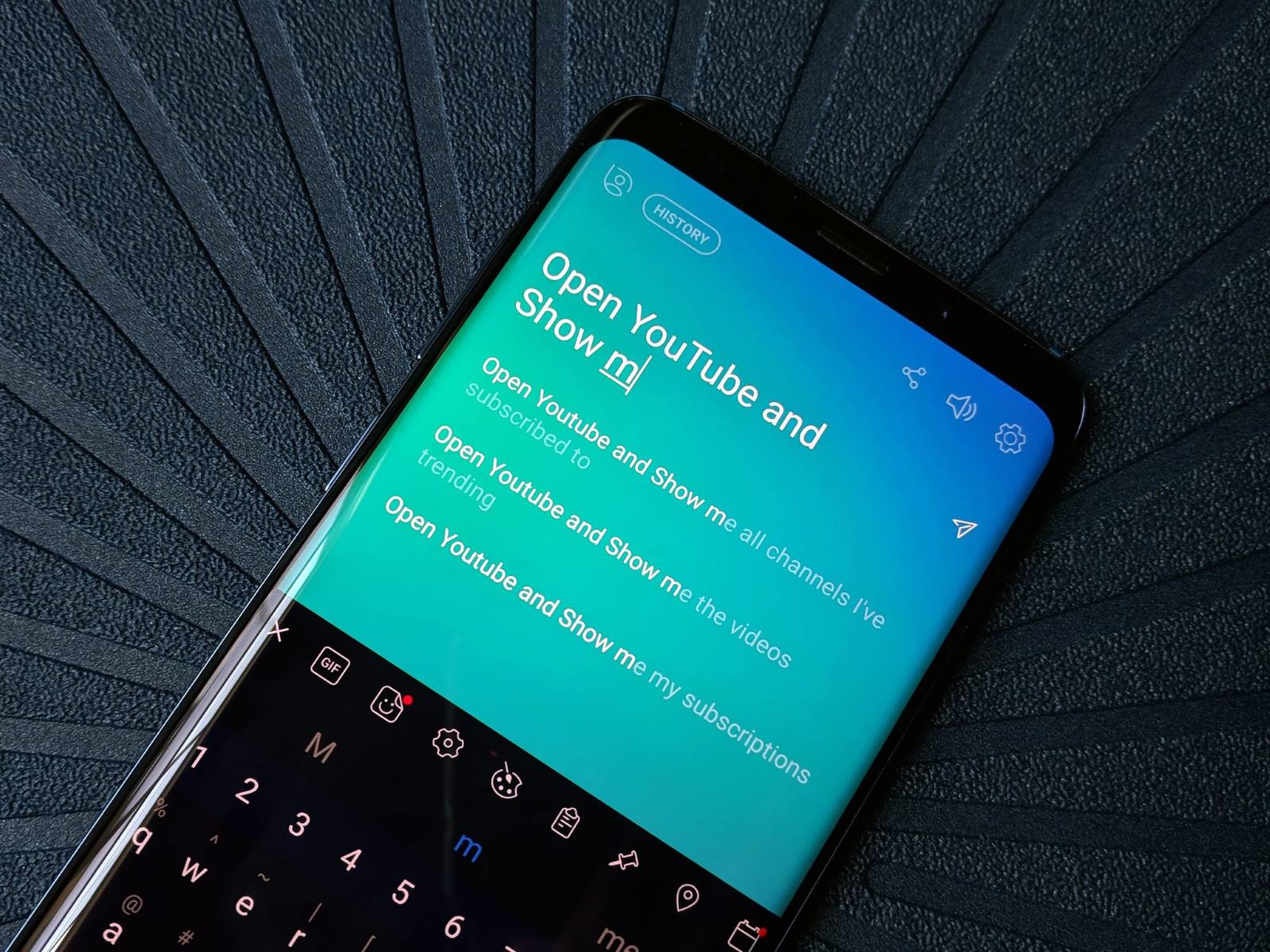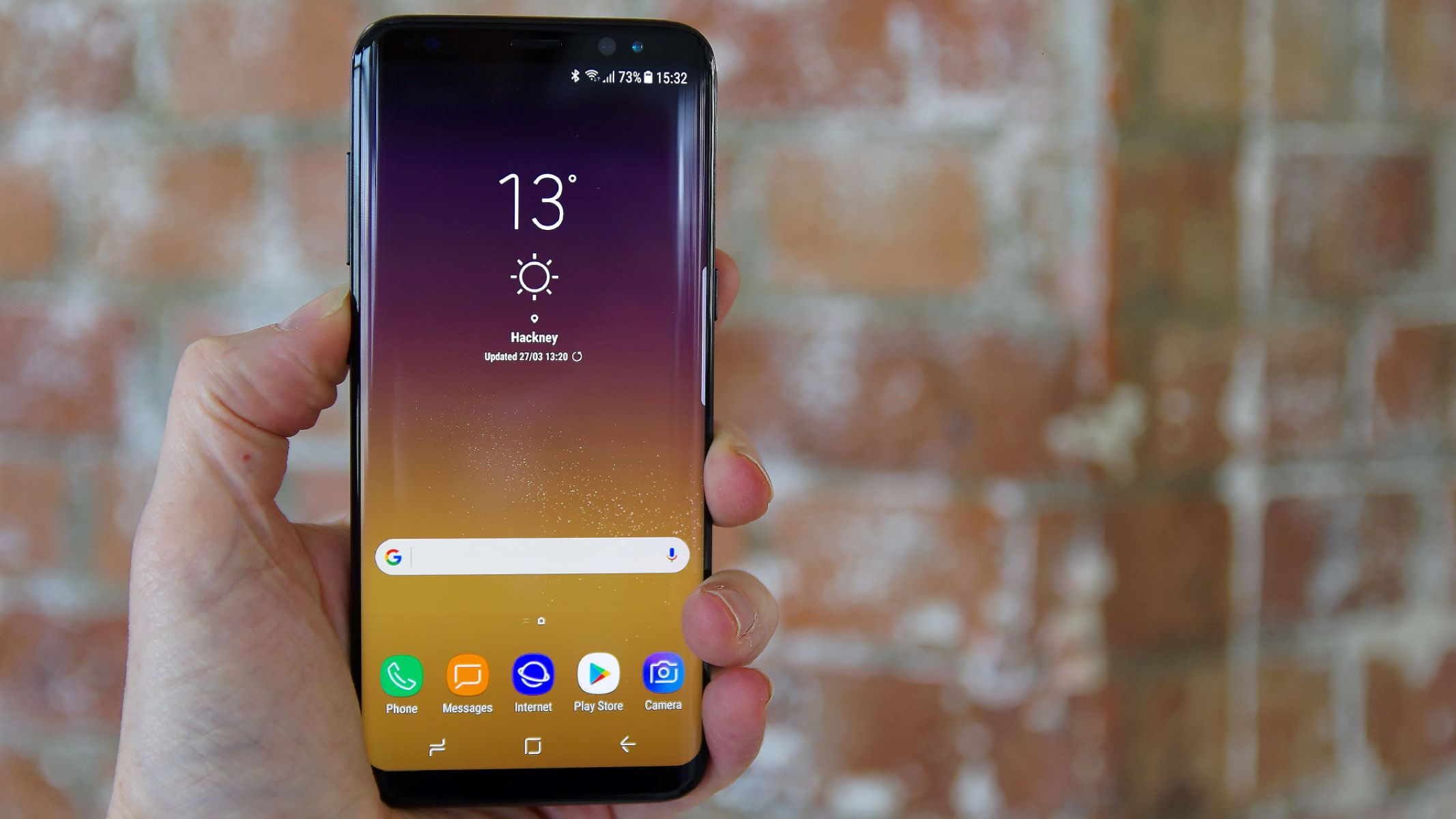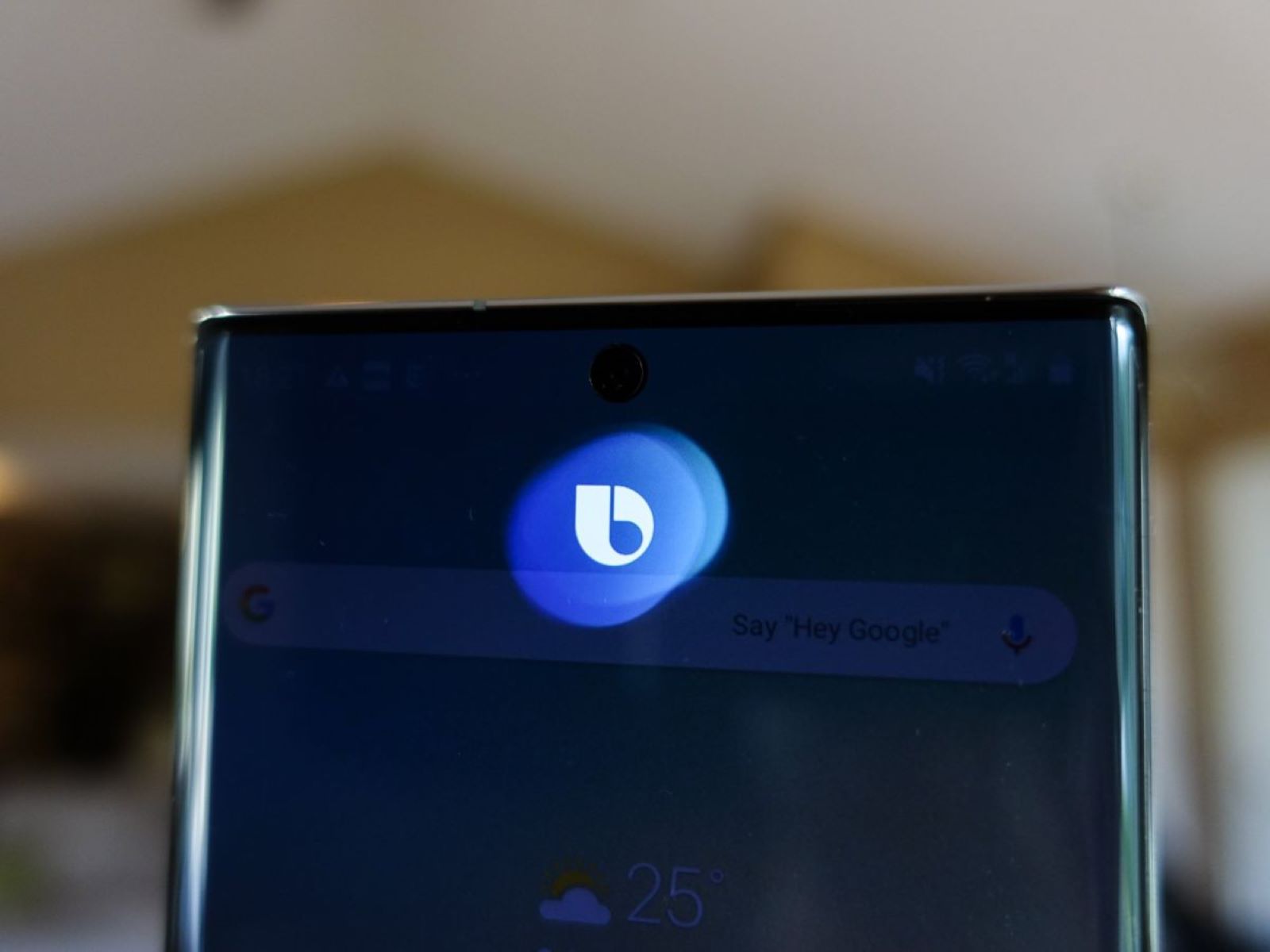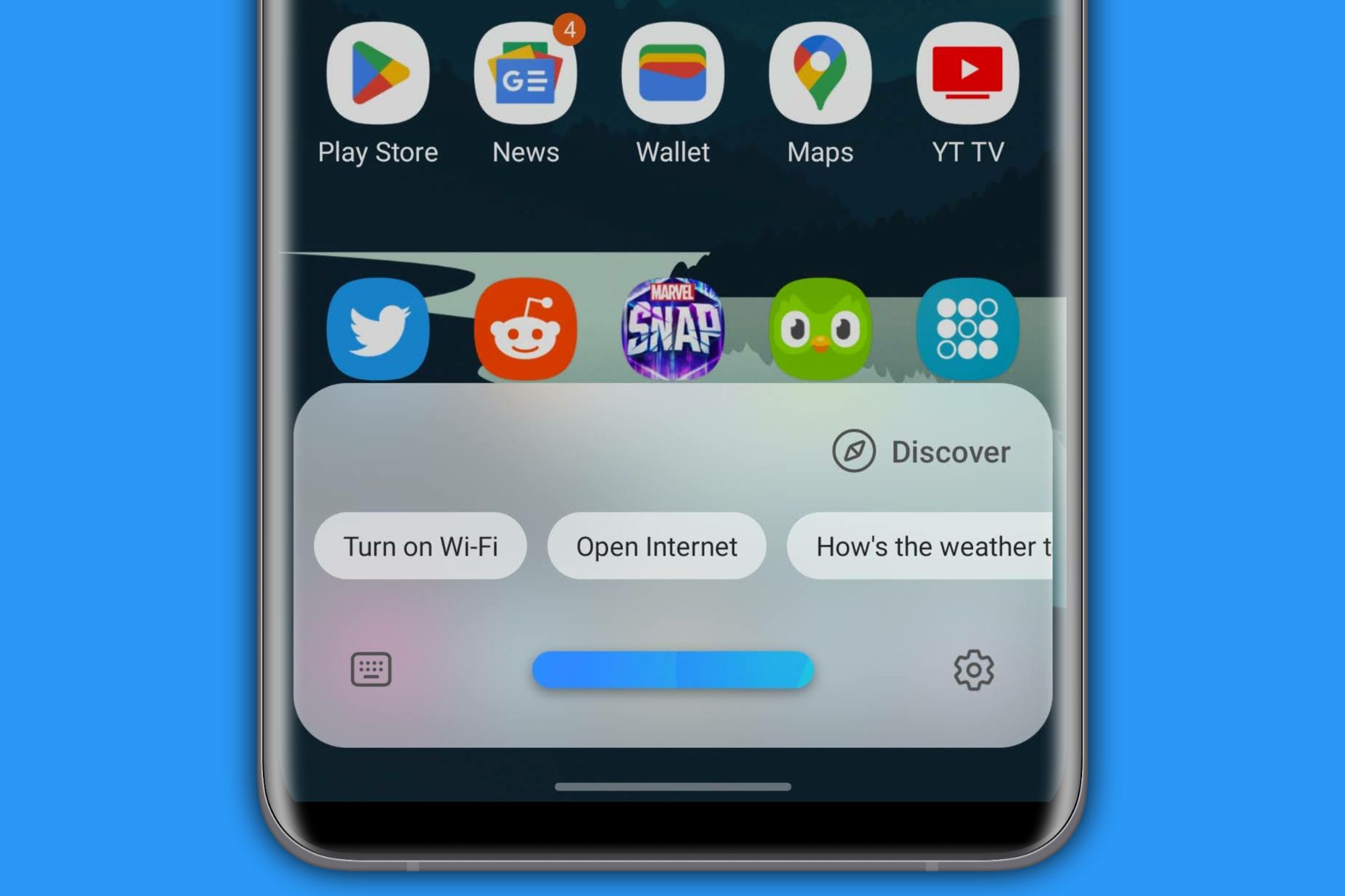Introduction
Welcome to the intriguing world of Bixby, Samsung’s virtual assistant. Bixby is a sophisticated and highly intelligent AI-powered program that can perform a multitude of tasks, from setting a reminder to ordering pizza. While Bixby is programmed to be polite and helpful, there may be times when you want to add a mischievous touch to its responses. If you’ve ever wondered how to make Bixby cuss or respond with sass, you’ve come to the right place.
Manipulating Bixby’s language model to incorporate cuss words requires a specific set of steps. In this guide, we will walk you through the process of making Bixby use naughty language, strictly for amusement purposes, of course. Please note that this guide is meant for educational and entertainment purposes only, and it should not be used to offend or disrespect others.
Before we dive into the technical aspects, it’s important to point out that Bixby’s programming is designed to be respectful and appropriate for all users. However, as developers, we have the flexibility to customize Bixby’s responses within certain bounds.
So, if you’re ready to add a touch of mischief to your Bixby interactions, let’s get started. Strap on your developer hat and embark on this exciting journey to make Bixby cuss, all in good fun.
How is Bixby Programmed?
Bixby is programmed using a combination of cutting-edge technologies such as natural language processing (NLP), machine learning, and deep learning algorithms. These technologies enable Bixby to understand and respond to user commands in a conversational manner.
At its core, Bixby has a language model that is trained on vast amounts of data, including common phrases, commands, and contextual information. This training allows Bixby to recognize patterns and understand the intent behind user queries.
In order to achieve its advanced functionality, Bixby relies on a sophisticated architecture known as the Bixby Developer Studio. This platform provides developers with the tools and resources necessary to create custom capsules, which are essentially the building blocks of Bixby’s capabilities.
Developers can use the Bixby Developer Studio to define the structure of their capsules, including defining the types of actions Bixby can perform and the necessary information it needs to carry out those actions. This process involves creating models, defining actions, and mapping out the various states and transitions in Bixby’s conversation flow.
Furthermore, Bixby uses a concept called “vivids” to help it understand and respond to user requests based on specific situations and contexts. Vivids allow developers to create dynamic responses that consider variables such as time, location, and user preferences.
Overall, Bixby’s programming is a delicate balance of advanced technologies and clever coding. It combines the power of NLP, machine learning, and deep learning to create a versatile and intelligent virtual assistant that can adapt to various user needs.
Understanding Bixby’s Language Model
Bixby’s language model is the foundation of its ability to understand and respond to user commands. This model is built with the help of machine learning algorithms that are trained on vast amounts of data to recognize patterns and infer meaning.
The language model consists of several components, including intents, utterances, and entities. Intents represent the user’s intent or purpose behind a specific command or request, while utterances are the actual phrases or sentences that users use to express their intent.
Entities, on the other hand, are the specific pieces of information that Bixby needs to carry out the user’s intent. For example, if a user wants to order a pizza, the entity in this case would be the type of pizza, the size, and the toppings.
Developers play a crucial role in defining these components of the language model. They need to carefully design and train Bixby to understand various user intents and map them to the appropriate actions or responses.
To make Bixby cuss, we need to incorporate cuss words into its vocabulary. This involves defining new intents and corresponding utterances that are triggered by specific phrases or keywords representing those cuss words.
It’s important to note that while we can add cuss words to Bixby’s language model, we should always exercise caution and use these capabilities responsibly. We must respect the privacy and preferences of the users and ensure that any offensive or inappropriate language is not used in a harmful or disrespectful manner.
By understanding Bixby’s language model and how it is structured, we can effectively customize its responses to include cuss words, adding a touch of mischief to our interactions. In the following sections, we will explore the step-by-step process of implementing this customization and ensuring that Bixby’s cuss capability is both entertaining and harmless.
Step 1: Activating Developer Options
Before we can begin customizing Bixby’s language model to include cuss words, we need to activate the developer options that will grant us access to the necessary tools and resources for customization.
To activate developer options in Bixby, follow these simple steps:
- Open the Bixby app on your Samsung device.
- Tap on the menu icon located in the top-left corner of the screen.
- Scroll down and select “Settings.”
- In the settings menu, tap on “Developer options.”
If the “Developer options” are not visible, you may need to enable them. To do so, follow these additional steps:
- Go back to the main settings menu and scroll down to “About phone” or “Software information.”
- Tap on “Software information” and look for the “Build number” or “Build version” entry.
- Tap on the “Build number” or “Build version” entry seven times in quick succession.
- You should see a message saying “You are now a developer!” or something similar.
- Now, go back to the main settings menu, and you should see the “Developer options” appear.
Once you have successfully activated the developer options, you will have access to the Bixby Developer Studio, where you can create and customize Bixby’s language model.
With developer options now enabled, we can move on to the next step: creating a capsule, which serves as the foundation for our customized Bixby experience. Follow along to learn how to create a capsule from scratch and define its properties and functionalities.
Step 2: Creating a Capsule
Now that we have activated the developer options, we can start creating a capsule, which is essentially a container for our customized Bixby experience.
To create a capsule in Bixby, follow these steps:
- Open the Bixby Developer Studio on your computer or device.
- Click on the “New Capsule” button to create a new project.
- Give your capsule a unique name and specify the desired location for the project files.
- Select the appropriate Bixby platform version.
- Choose the template that best suits your needs. You can select from various pre-built templates or start from scratch.
- Click on the “Create” button to generate the initial files and structure for your capsule.
Once the capsule is created, you will have access to the various files and directories that make up the structure of your project.
These files include the “capsule.bxb” file, which serves as the entry point for your capsule, as well as other directories such as “models,” “actions,” and “resources,” where you can define intents, utterances, actions, and other components of your custom Bixby experience.
Now, you are ready to move on to the next step, which involves defining the intents and utterances that will allow Bixby to recognize and respond to specific user commands. Stay tuned to learn more about this crucial step in customizing Bixby’s language model!
Step 3: Defining Intents and Utterances
With the capsule created, we can now start defining the intents and utterances that will enable Bixby to understand and respond to specific user commands.
Intents represent the user’s intent or purpose behind a command or request, while utterances are the phrases or sentences that users use to express their intent.
To define intents and utterances in Bixby, follow these steps:
- Navigate to the “models” directory within your capsule’s project files.
- Open the “en” folder, which represents the English language.
- Inside the “en” folder, you will find a file named “training” with a “.training.en” extension.
- Edit the “training” file using a text editor of your choice.
- Add new lines to define intents and their corresponding utterances.
- For example, to enable Bixby to respond with a cuss word when asked to tell a joke, you can add the following line:
[TellAJoke] Tell me a fucking joke - Save the changes to the “training” file.
By defining intents and utterances, you are providing Bixby with the necessary context to recognize user commands and map them to specific actions or responses.
It’s important to use caution when defining cuss words or any offensive language. Ensure that your intentions are solely for entertainment purposes and that you are not intending to cause harm or offend others.
Now that we have defined the intents and utterances, the next step is to train Bixby’s natural language understanding to recognize and understand these commands. In the following section, we will explore how to train Bixby and refine its understanding of the defined intents and utterances.
Step 4: Training Bixby’s Natural Language Understanding
Now that we have defined the intents and utterances for our customized commands, it’s time to train Bixby’s natural language understanding to recognize and accurately interpret these commands.
To train Bixby’s natural language understanding, follow these steps:
- Within the Bixby Developer Studio, navigate to the “Training” tab.
- Click on the “Compile” button to compile your capsule’s models and resources.
- Once the compilation is complete, click on the “Train” button to initiate the training process.
- Bixby will now analyze and learn from the defined intents and utterances to improve its understanding.
- Depending on the complexity of your capsule and the number of defined commands, the training process may take some time to complete.
- After the training is finished, you can test Bixby’s understanding by using the simulator or by deploying your capsule to a compatible device.
During the training process, Bixby will learn from the contextual information provided in the intents and utterances, allowing it to make accurate connections between user commands and desired actions or responses.
It’s important to test and iterate upon the training process, making adjustments to the intents and utterances as needed to ensure Bixby understands and responds appropriately.
With Bixby’s natural language understanding trained and refined, we can now move on to the exciting part—adding cuss words to Bixby’s vocabulary and making it cuss in selected scenarios. Let’s explore the next step in the process: incorporating cuss words into Bixby’s language model.
Step 5: Adding Cuss Words to Bixby’s Vocabulary
Now that Bixby’s natural language understanding is trained, we can proceed to add cuss words to Bixby’s vocabulary. This step involves incorporating these words into Bixby’s language model, allowing it to recognize and respond with cuss words when appropriate.
To add cuss words to Bixby’s vocabulary, follow these steps:
- Within the Bixby Developer Studio, navigate to the models directory of your capsule’s project files.
- Open the “en” folder, which represents the English language.
- Look for the file named “vocab” with a “.vocab.bxb” extension.
- Edit the “vocab” file using a text editor.
- Add new lines to introduce cuss words into Bixby’s vocabulary.
- For example, to add a cuss word “shit,” you can add the following line:
[CussWord] shit - Save the changes to the “vocab” file.
By adding cuss words to Bixby’s vocabulary, you are expanding its lexical knowledge and enabling it to respond with these words in specific scenarios or user commands.
Remember, it’s crucial to exercise caution and consider the appropriateness of using cuss words in Bixby’s responses. Ensure that your intentions are purely for entertainment purposes and that you are not intending to offend or disrespect others.
Now that we have successfully added cuss words to Bixby’s vocabulary, we are ready to move on to the next step: testing and refining Bixby’s cuss capability. Let’s explore how we can ensure that Bixby responds with just the right amount of cheekiness!
Step 6: Testing and Refining Bixby’s Cuss Capability
With cuss words added to Bixby’s vocabulary, the final step is to test and refine Bixby’s cuss capability to ensure it responds appropriately and in a controlled manner.
Follow these steps to test and refine Bixby’s cuss capability:
- Use the Bixby Developer Studio’s simulator or deploy your capsule to a compatible device.
- Interact with Bixby by triggering the intents and utterances you defined.
- Observe how Bixby responds to the cuss words in different scenarios.
- Check for any unexpected behavior or responses that may need refinement.
- Iterate and make adjustments to the intents, utterances, and vocabulary as necessary.
- Repeat the testing process to ensure that Bixby’s cuss capability aligns with your intended level of cheekiness.
It’s important to test Bixby’s cuss capability thoroughly and ensure that it remains within the boundaries of appropriateness and respect for all users.
Remember, the purpose of adding cuss words to Bixby’s vocabulary is for amusement and entertainment. It should not be used to offend or harm others.
By testing and refining Bixby’s cuss capability, you can fine-tune its responses to create a fun and cheeky interaction with the virtual assistant.
With the testing and refinement process complete, you can now delight in the mischievous and sassy side of Bixby. Enjoy the playful banter and have fun exploring the unique responses that Bixby provides!
Conclusion
Customizing Bixby to make it cuss or respond with sass can add a playful and entertaining element to your interactions with the virtual assistant. Through the steps outlined in this guide, we have explored how to activate developer options, create a capsule, define intents and utterances, train Bixby’s natural language understanding, add cuss words to its vocabulary, and test and refine its cuss capability.
However, it is essential to approach this customization responsibly and with respect for others. The use of cuss words should be for amusement purposes only, and it is crucial to avoid offensive or disrespectful language. Consider the preferences and privacy of users, ensuring that any interactions with Bixby remain within acceptable boundaries.
Remember, Bixby is a highly intelligent virtual assistant that has been designed to be respectful and helpful. While incorporating a touch of mischief can be entertaining, it is crucial to exercise caution and use these capabilities in a responsible and considerate manner.
By understanding how Bixby’s language model works and following the steps outlined in this guide, you can unleash the fun side of Bixby and enjoy its sassy responses. Whether it’s for personal amusement or to entertain friends and family, the customized cuss capability of Bixby adds an extra layer of playfulness to the virtual assistant’s repertoire.
Embrace the creativity and versatility of Bixby, and have a great time exploring its mischievous and cheeky responses. Remember to spread joy and laughter, but always prioritize respect for others in your interactions with Bixby.
Now, go ahead and enjoy the unique and customized experience that Bixby offers. Have fun, but always remember to keep it light-hearted!







